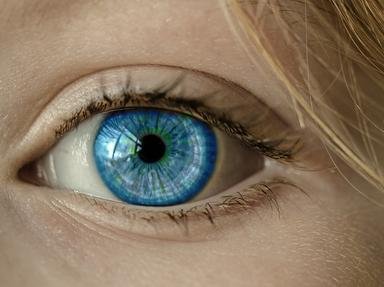Quiz Answer Key and Fun Facts
1. When you go to an ophthalmologist for an eye exam, you are often asked to look at a chart that has rows of letters in decreasing sizes, with a very large "E" at the top, followed by other letters. What is the name of this chart?
2. If you have "pinkeye," what part of your eye is affected?
3. Your doctor says you have an orbital ecchymosis. What would your best friend call it?
4. What part of the eye is affected by blepharitis?
5. Rosacea is better known as a skin inflammation, but it also can affect the eyes. Which of these is not a possible treatment for ocular rosacea?
6. What are the photoreceptor cells in the eyes that are most involved in helping you see color?
7. Who was the famous scientist who first described colorblindness, and after whom the condition is named?
8. Intraocular melanoma is a cancer which forms in the tissue of the eye. Though it is rare, it still is the most common eye cancer in adults. What is one of the risk factors for intraocular melanoma?
9. The "Magic Eye" books were a fad in the 1990s, and have continued to be popular. They are printed two-dimensional patterns which some people can perceive as three-dimensional images if they move their eyes in the right way. What is the actual name for this type of effect?
10. What is the medical term for crossed eyes?
Source: Author
BarbaraMcI
This quiz was reviewed by FunTrivia editor
rossian before going online.
Any errors found in FunTrivia content are routinely corrected through our feedback system.

